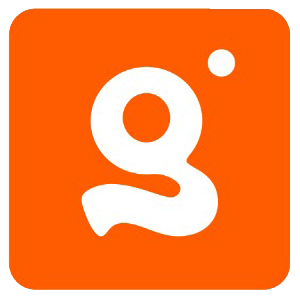This website uses cookies so that we can provide you with the best user experience possible. Cookie information is stored in your browser and performs functions such as recognising you when you return to our website and helping our team to understand which sections of the website you find most interesting and useful.

With so many recruitment ATS systems out there, it can be hard to know which one to go for. In this article, we look at the best recruitment ATS systems out there and highlight everything you need to know when it comes to applicant tracking systems.
What are Recruitment ATS Systems
ATS stands for Applicant Tracking System. It is software that helps streamline the recruitment process by centralizing candidate information, can automate certain tasks, and provides data analytics. An ATS will support the full lifecycle of the candidate’s recruitment process from the job posting to the job offer stage.
Features of a Recruitment ATS System
You should expect to see the following core features in any ATS you are using or considering to use:
Core ATS Features
- Resume Parsing: The ability to collect resumes easily by parsing them into the database at the click of a button. Usually, you can drag and drop the candidate’s resume in for it to be parsed.
- Applicant Tracking: Manage applicant flow, track application status, and organize candidates based on job requirements and skills.
- Communication: Send automated emails and messages to candidates, schedule interviews, and track communication history.
- Interview Management: Schedule interviews, track interviewer feedback, and rate candidates.
- Mobile Accessibility: Access the ATS from any device for on-the-go recruiting.
Advanced ATS Features
- Candidate Relationship Management (CRM): Some ATS systems will include or be merged with a CRM. This will help build and maintain relationships with potential clients and candidates for future opportunities.
- Talent Pool: A talent pool feature helps you categorise candidates into groups related to aspects such as location, skills, qualification or anything else that you might need them to be filtered by. This will help you get to the right qualified candidates quickly.
- Analytics and Reporting: Generate reports on hiring metrics, time-to-hire, cost-per-hire, and other key performance indicators.
- Job Posting: With an ATS it is good to have an ATS with the ability to create and manage job descriptions and post to various job boards.
- Integrations: Integrate with other systems like LinkedIn or social media platforms to find and engage with potential candidates.
Additional ATS Features
- Video Interviewing: Conduct video interviews and record them for later review.
- Compliance: Ensure compliance with employment laws and regulations.
- AI and Machine Learning: Use AI to screen resumes, identify top candidates, and predict candidate fit.
ATS vs CRM
While both CRM and ATS are tools used in recruitment, they serve distinct purposes.
ATS (Applicant Tracking System)
Focus: Manages the hiring process from job posting to onboarding.
Key functions:
- Job posting and management
- Candidate sourcing and tracking
- Resume parsing and screening
- Interview scheduling and feedback
- Onboarding processes
Ideal for: High-volume recruiting, tracking applicant flow, and ensuring compliance.
CRM (Customer Relationship Management)
Focus: Builds and maintains relationships with potential and existing talent.
Key functions:
- Talent pooling
- Candidate nurturing
- Personalized communication
- Client outreach automation
Ideal for: Sourcing passive candidates, building a talent pipeline, and enhancing employer branding.
A lot of recruitment platforms on the market offer a solution that is like both an ATS and CRM combination.
What is the Difference Between a Recruitment ATS and CRM?
How to Choose an ATS
When choosing an ATS it will depend on things such as your needs, budget, volume and personal preferences. In my opinion, the main aspect is the user-friendliness of the ATS you chose. You want to avoid anything that is hard to navigate or that feels clunky otherwise you will just get frustrated and won’t use it how you should.
Here are the points to consider when choosing an ATS:
- Identify your needs: Consider your company size, budget, and specific requirements.
- Evaluate features: Look for the features listed in the previous section like candidate database, job posting, and applicant tracking.
- Consider integrations: Check if the ATS integrates with other tools you use (e.g., job boards or other recruitment software).
- User-friendliness: Ensure the interface is intuitive and easy to navigate.
- Pricing: Compare costs and consider long-term value as well as utilise any discounts or free trials. Be sure to make the most of any with a free version.
The Best Recruitment ATS Systems for Small Teams
1. Giighire
Best recruitment ATS system for small recruitment agencies and independent recruiters.
- Ideal for: Small agencies and independent recruiters seeking a user-friendly and affordable solution.
- Key features: Intuitive interface, mobile optimization, CRM, website builder, talent pool feature, mass import, email integration, bulk email and much more.
- Price: A free version is available and paid-for packages start at $12.75 per month. You are also not locked into a contract.
- Reviews: Trustpilot
2. Zoho Recruit
Best recruitment ATS system for staffing agencies.
- Ideal for: Staffing agencies looking for a complete ATS with CRM functionalities.
- Key features: Candidate relationship management, social recruiting, interview scheduling, and analytics.
- Price: A Free version is available with paid-for packages starting at $25 per month.
- Reviews: Trustpilot, Capterra
3. Manatal
Best recruitment ATS system for HR teams, recruitment agencies, and headhunters.
- Ideal for: Mid-sized to enterprise-level recruiting teams seeking a robust, AI-powered ATS with comprehensive features.
- Key features: Advanced AI-driven candidate sourcing and matching, robust CRM, extensive integrations, customizable workflows, and in-depth analytics.
- Price: No free version is available. Paid-for packages start at $15 per month.
- Reviews: Trustpilot, Capterra
Here is a more in-depth article on the best recruitment ATS system out there: Best Applicant Tracking System
Conclusion
When looking at the best recruitment ATS systems, selecting the right ATS is crucial for small recruitment companies to thrive. By understanding your specific needs and carefully evaluating available options, you can find the perfect ATS to streamline your recruitment process, enhance efficiency, and ultimately drive business growth.
